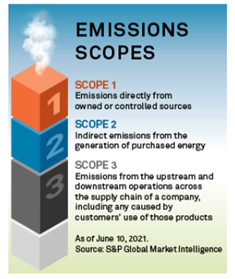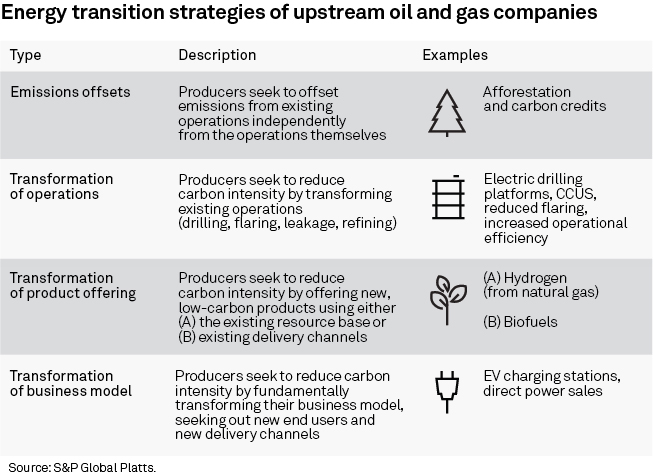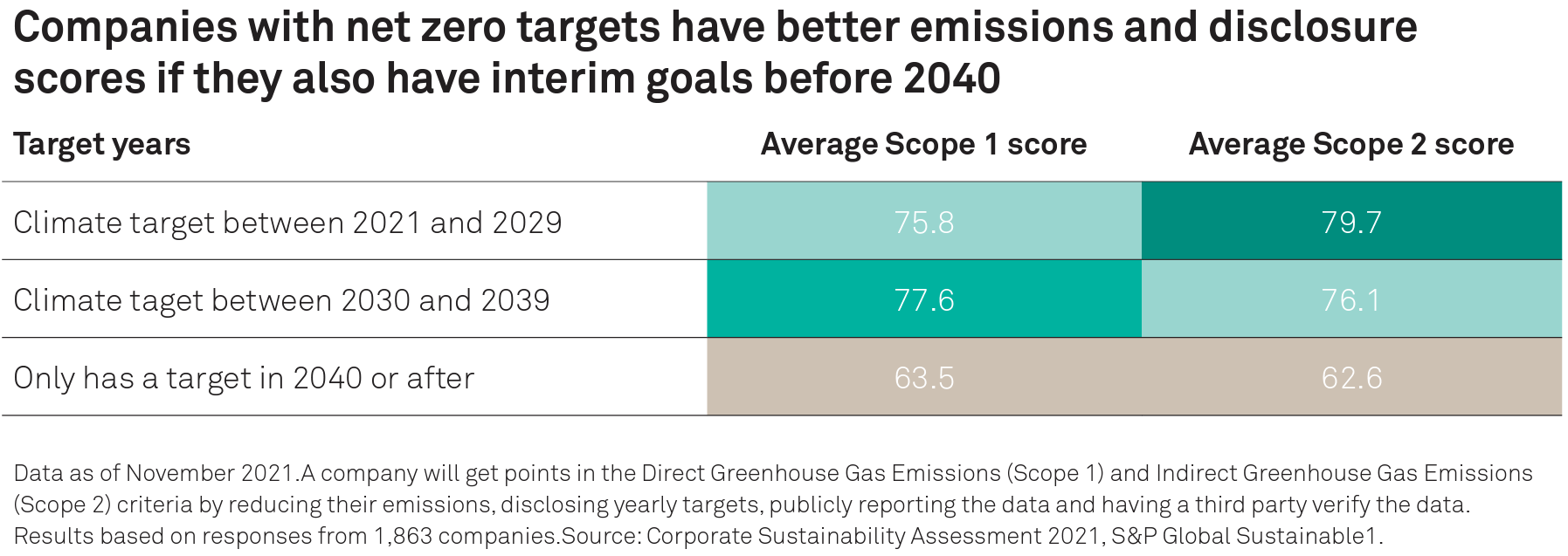The rising wave of major companies announcing ambitious, long-term emissions targets made “net zero” one of the top sustainability buzzwords of 2021. Large corporates around the world have pledged to cut their greenhouse gas emissions as close to zero as possible and offset the remainder, usually by the distant deadline of 2050.
These announcements have grabbed headlines and give the impression that the corporate world is moving to tackle climate change. But the reality is more complicated.
Data collected in the 2021 S&P Global Corporate Sustainability Assessment, or CSA, indicates that most companies globally have yet to set even initial emission reduction targets, much less net zero ones.
Only 36.8% of about 5,300 companies reviewed in the latest CSA have announced plans to curb direct emissions and/or emissions associated with their purchased energy, also known as Scope 1 emissions and Scope 2 emissions, respectively. These areas of emissions are the first two that companies target, making them a key indicator of how far along companies are on their climate journey.
While only a third of companies globally have announced Scope 1 and Scope 2 climate targets, adoption rates vary greatly on a regional scale and among sectors.
Unsurprisingly, given how much longer Europe has paid attention to environmental, social and governance issues compared to the rest of the world, 59% of European companies have announced plans to reduce direct emissions and/or emissions associated with their purchased energy. However, only 35.6% of companies in North America, 31.1% in Latin America, and 29.4% of companies in the Asia-Pacific region have announced Scope 1 and/or Scope 2 reduction targets.
Setting net zero targets appears to be even less common. S&P Global ESG analysts reviewed data collected by the sustainability disclosure platform CDP. They found that only 23.7% of all companies that responded to CDP’s climate survey and are also part of the CSA analysis for this article have set a net zero emissions target. The lack of progress in these larger universes of companies contrasts starkly with the widespread net zero commitments made by top firms. The majority of the 30 largest companies by sector have made net zero pledges as of December 2021, according to a recent analysis by S&P Global Market Intelligence journalists.1 That includes 21 of the 30 largest U.S. and European oil and gas firms, 26 of the largest U.S. utilities and all 30 of the largest American, Canadian and European banks.2

Outside of those corporate giants, the figures signal that the corporate world collectively still has far to go to even begin to address climate change.
Scientists say the world needs to achieve net zero emissions by 2050 to limit global warming to 1.5 degrees C, relative to preindustrial levels. But immediate progress is also needed: Scientists have projected that the path to net zero requires cutting global emissions by about 45% by the end of this decade,3 which means just about all companies across all sectors need to make measurable progress on curbing emissions within the next few years. No sector can be left behind.
Moreover, companies are sure to come under added pressure from investors, governments and the public both to set credible targets and to establish interim goals and show progress toward them. And this sense of urgency will grow over time as the global emissions continue to accumulate, the costs of climate-related disasters escalate and the likelihood grows that governments will pass more stringent climate-related regulations in the face of corporate inaction.
Energy and utilities leading on climate targets
For both climate targets and net zero targets, the energy and utilities sectors have higher rates of adoption than other sectors.
For example, 48.4% of energy sector and 48.0% of utilities sector companies have Scope 1 and/or Scope 2 climate targets, followed by the materials sector at 47.2%, consumer staples at 42.7% and industrials at 41.4%. Around one-third of companies in other sectors have set these targets, with the exception of the health care sector, where only 21% of companies have targets.
CDP data shows that the sector rankings on net zero commitments are slightly different but generally follow the same pattern, with energy and utilities still leading and the health care sector having the lowest percentage of companies with net zero targets.
The prevalence of net zero targets among energy companies compared to others is likely due to several factors.
For starters, fossil fuels, which oil and gas companies pump out of the earth and sell in various forms, were responsible for 81% to 91% of human-caused emissions from 2010 to 2019, according to the U.N.’s Intergovernmental Panel on Climate Change, or IPCC.4 And electric utilities use primarily natural gas and coal to produce the world’s power supplies, although the portion of electricity produced from zero-carbon renewable resources is growing.
Given their outsized role in global emissions, energy companies and utilities have faced the most pressure from investors – although that pressure has expanded to other sectors in recent years – to report on their emissions and set comprehensive targets that align with limiting global warming to 1.5 degrees C.
Energy companies and utilities likely also find it easier than other sectors to calculate their emissions, particularly Scope 1 and Scope 2, given that many already report emissions to federal regulators such as the U.S. Environmental Protection Agency.

Furthermore, utilities have one of the clearest pathways to decarbonatization through their role in the energy transition. Power providers can replace a large portion of their fossil fuel fleet with renewables today, though fossil fuels are also currently needed to ensure reliability. And, as other low-carbon technologies evolve, utilities will have additional options for decarbonization in the form of carbon capture and sequestration, battery storage and advanced nuclear.
Sectors with less clear exposure to fossil fuels are also setting net zero targets, albeit to a lesser extent. About 28% of communication services companies, 27% of financial companies and 26% of real estate companies have set net zero targets. But only 11% of health care companies globally are pursuing net zero goals.
Going forward, companies across all sectors can expect to feel more pressure from investors and regulators to set net zero targets and show their plan for meeting them.
Where do companies with climate targets stand?
Focusing on the small share of companies globally that have set climate targets, the 2021 CSA can provide more insight on the rigor and significance of companies’ efforts.
The survey asked companies if their climate goals aligned with a 2-degree science-based target, which still requires companies to reduce their emissions but to a lesser extent than under a more ambitious 1.5-degree net zero scenario.5
Companies that have announced plans to reduce Scope 1 and/or Scope 2 emissions are almost evenly split on whether they have aligned those goals with a 2-degree warming scenario – one in which the world limits global warming this century to 2 degrees C relative to preindustrial levels.
This indicates that many companies may be setting targets that fall short of what’s needed even under a 2-degree C scenario.
A fully developed net zero target should include both direct and indirect emissions. But these indirect Scope 3 emissions that occur up and down the company’s value chain – including when customers use the products – are harder to measure for some industries and difficult to reduce for most because they are ultimately out of companies’ direct control.
As a result, most companies are only beginning to measure and report on these emissions. Only 42% of companies in the 2021 CSA report on at least one source of Scope 3 emissions.
But those levels vary more on a sector basis. Utilities was the top sector with 58.3% of companies reporting at least one source of Scope 3 emissions. But the energy sector ranked fourth in this area with only 45.8% reporting at least one source of Scope 3 emissions, while 46.5% of financials and 47.4% of materials sector companies report those emissions.
Scope 3 emissions are especially significant for energy sector oil and gas companies as the majority of their emissions occur when customers use their products for transportation fuel and other consumer goods and services. Strategies to reduce Scope 3 emissions generally include reducing the carbon content of fuels by using alternative liquids such as biofuels, or by pivoting to more efficient but less well-developed fuels such as electricity or hydrogen. These latter options, however, still lack sufficient distribution infrastructure.
While some oil and gas companies have begun to set net zero targets, many of those announcements cover only their operations. One prime recent example is the announcement in September 2021 by the Oil and Gas Climate Initiative, or OGCI, which represents 12 of the world’s largest oil companies. The OGCI said its members aim to reach net zero emissions from operations under their control by 2050, which spans Scopes 1 and 2. The commitment did not include Scope 3 emissions. In 2019, upstream Scope 3 emissions alone made up just over half of those 12 companies’ carbon footprints. 6
But as the role of fossil fuels in driving climate change has become clearer and as the risk of more stringent climate-related regulations increases, the energy sector has started to look for ways to shift away from fossil fuels or partially decarbonize those fuels through the creation of blue or green hydrogen, investing in carbon capture and sequestration or by moving more toward renewable electricity and other power generation business lines.
One positive sign is that the vast majority of companies setting overall climate-related targets are reporting Scope 3 emissions too. Specifically, 87% of companies in the 2021 CSA that have set climate targets are reporting on at least one source of Scope 3 emissions. While there is no guarantee that those companies who report on Scope 3 emissions will set associated Scope 3 reduction targets, reporting those figures is a key first step forward.
Interim targets make for better performance on related CSA scores
Setting a net zero target is an important overarching objective for companies to address the threat of climate change, but ambitious goals alone are not sufficient. Companies also need to make proactive changes on the path to net zero now. They need to create realistic plans to transition to a low-carbon world. And crucially, those transition pathways would need to include near-term emissions reduction milestones. The path to 2050 – the typical target date for corporate net zero targets – can’t be traveled without credible signposts in the next few years, S&P Global Sustainable1 wrote in October 2021.8
Investors are paying special attention to this area, and investor-led groups like Climate Action 100+ have specifically called for companies to show their 2030 interim goals.9
Interim targets also indicate how serious a company is about its goal and can affect its CSA sustainability scoring in a positive way when it comes to emissions and disclosure. A review of climate-related emissions performance scores and target disclosure scores of companies that have set net zero targets shows that companies that have set targets before 2040 scored higher than those that are waiting to start curbing emissions until 2040 or after.

While just over one-third of companies reviewed in the 2021 CSA have set climate targets, the number needs to grow quickly to ensure the world is on track to limit global warming and forestall some of the worst consequences of climate change. Transparency and accountability will be key going forward to ensure companies are not only setting targets but also carrying them out and taking concrete action along the way to ensure they meet those goals.
Isabelle Stauffer contributed to this article.
[1] Net zero announcements made in 2021 will be reflected in the 2022 CSA results.
[2] "Path to net-zero: Stakeholders demand action on ambitions as pledges swell,” S&P Capital IQ Pro, Dec. 13, 2021, https://www.spglobal.com/marketintelligence/en/news-insights/latest-news-headlines/path-to-net-zero-stakeholders-demand-action-on-ambitions-as-pledges-swell-67951124.
[3] "Summary for Policymakers of IPCC Special Report on Global Warming of 1.5°C approved by governments,” Intergovernmental Panel on Climate Change, Oct. 8, 2018, https://www.ipcc.ch/2018/10/08/summary-for-policymakers-of-ipcc-special-report-on-global-warming-of-1-5c-approved-by-governments/.
[4] I“Climate Change 2021: The Physical Science Basis,” Intergovernmental Panel on Climate Change, Aug. 7, 2021, https://www.ipcc.ch/report/ar6/wg1/downloads/report/IPCC_AR6_WGI_Full_Report.pdf.
[5] The 2021 CSA questionnaire asked companies if their goals aligned with a 2-degree warming scenario, which at the time matched the Science Based Targets initiative’s standard.
[6] “Oil group’s net-zero goal shuns emissions cuts that would threaten core assets,” S&P Capital IQ Pro, Sept. 29, 2021, https://www.spglobal.com/marketintelligence/en/news-insights/latest-news-headlines/oil-group-s-net-zero-goal-shuns-emissions-cuts-that-would-threaten-core-assets-66773327.
[7] “US hydrogen pilot projects build up as gas utilities seek low-carbon future,” S&P Capital IQ Pro, Oct. 8, 2021, https://www.spglobal.com/marketintelligence/en/news-insights/latest-news-headlines/us-hydrogen-pilot-projects-build-up-as-gas-utilities-seek-low-carbon-future-65570349?mkt_tok=NTY1LUJETy0xMDAAAAGAGPzRsoe0Ebw1ZTVmDwnJ_PoKCVc_BQlRqAoHNlSGJu-C5REaEiLAgNqhhox0ebUte8rdQUT14J3ZzkC-73SJ5RQlnfyC1WAE8H6Z8srK-V9FoiQIg.
[8] “2025 Could Mark a Tipping Point for the Low-Carbon Energy Transition,” S&P Global Sustainable1, Oct. 1, 2021, https://www.spglobal.com/esg/insights/2025-could-mark-a-tipping-point-for-the-low-carbon-energy-transition.
[9] Climate Action 100+ Successes, https://www.climateaction100.org/progress/successes/.


